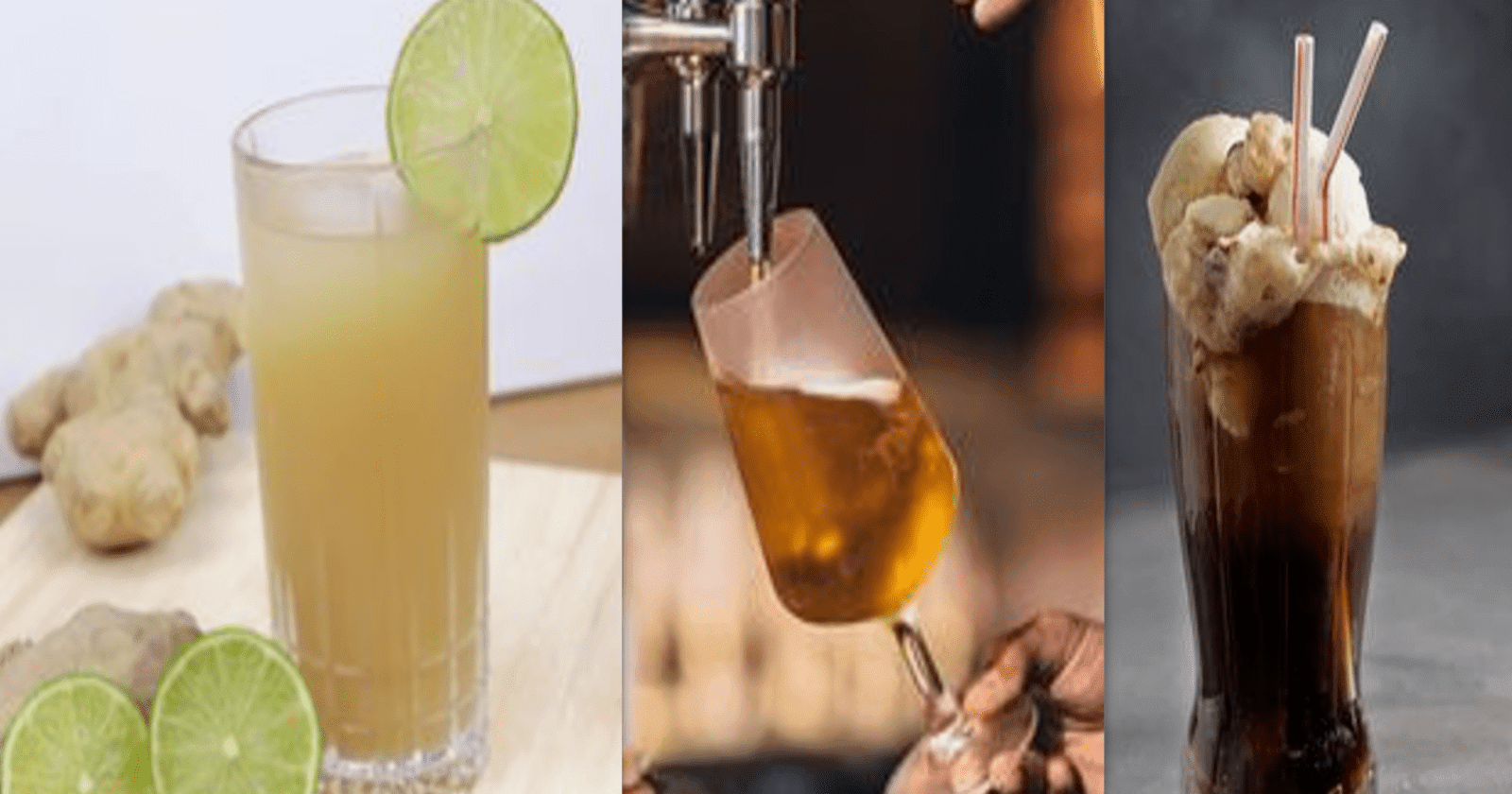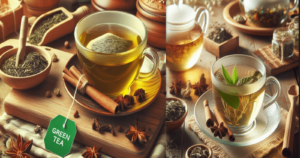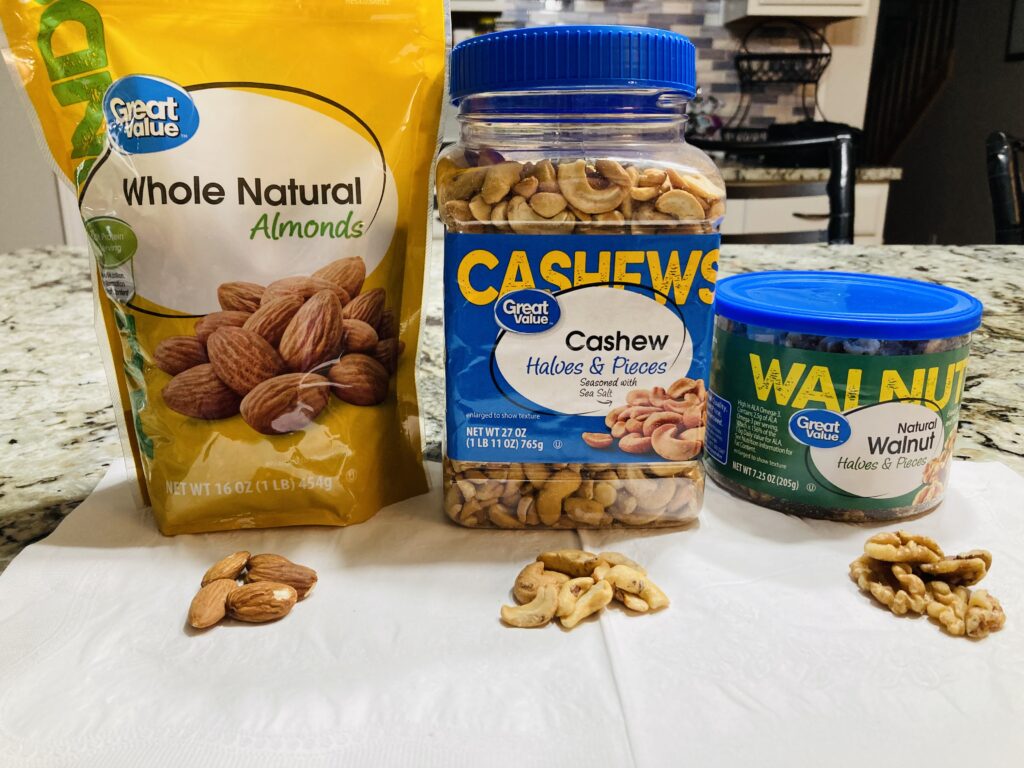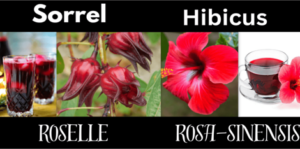Ginger beer and Root beer are both non-alcoholic beverages with unique flavor profiles, and can be carbonated or non-carbonated. Ginger beer is made from the root of the ginger plant while root beer is made from the bark of the sassafras tree or the vine of Smilax ornate (known as sarsaparilla).
Draught (draft) beer is an alcoholic beverage with a method of serving beer directly from a keg or cask, rather than from a bottle or can which brings to the drink some distinct set of qualities, it is a popular beverage choice for many enthusiasts seeking a fresh and distinctive drinking experience.
- Ginger beer is a non-alcoholic, carbonated or non-carbonated beverage that is flavored primarily with ginger and sweetened with sugar or other sweeteners. It has a strong, spicy, and zesty flavor profile with a hint of sweetness.
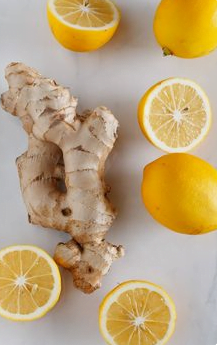
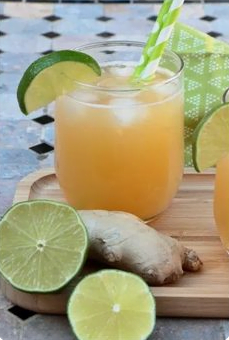
2. Root beer is a non-alcoholic ,carbonated or non-carbonated soft drink that is flavored primarily with botanical extracts, including sassafras, vanilla, wintergreen, licorice, and other herbs and spices. It has a sweet, aromatic, and slightly creamy taste.
3. Draught beer (also known as draft beer) is a type of alcoholic beer that is served directly from a keg or cask rather than from a bottle or can. It’s typically fresher and offers a smoother, creamier texture compared to bottled beer.
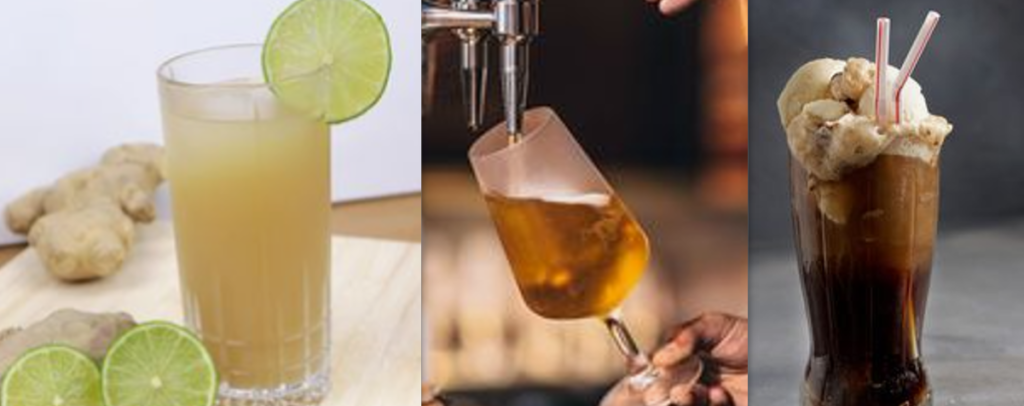
Differences between Ginger beer, Root beer and Draught beer
- Ingredients:
- Ginger Beer: It is a non-alcoholic beverage made from ginger, sugar, water, and sometimes lemon or lime juice. It’s known for its spicy, ginger flavor.
- Root Beer: It is a non-alcoholic beverage made from roots such as sassafras, sugar or sweeteners, and various herbs and spices. It has a distinct, earthy taste.
- Draught Beer (Draft Beer): This is an alcoholic beer that is typically served on tap, straight from a keg. It’s made from malted barley, hops, water, and yeast.
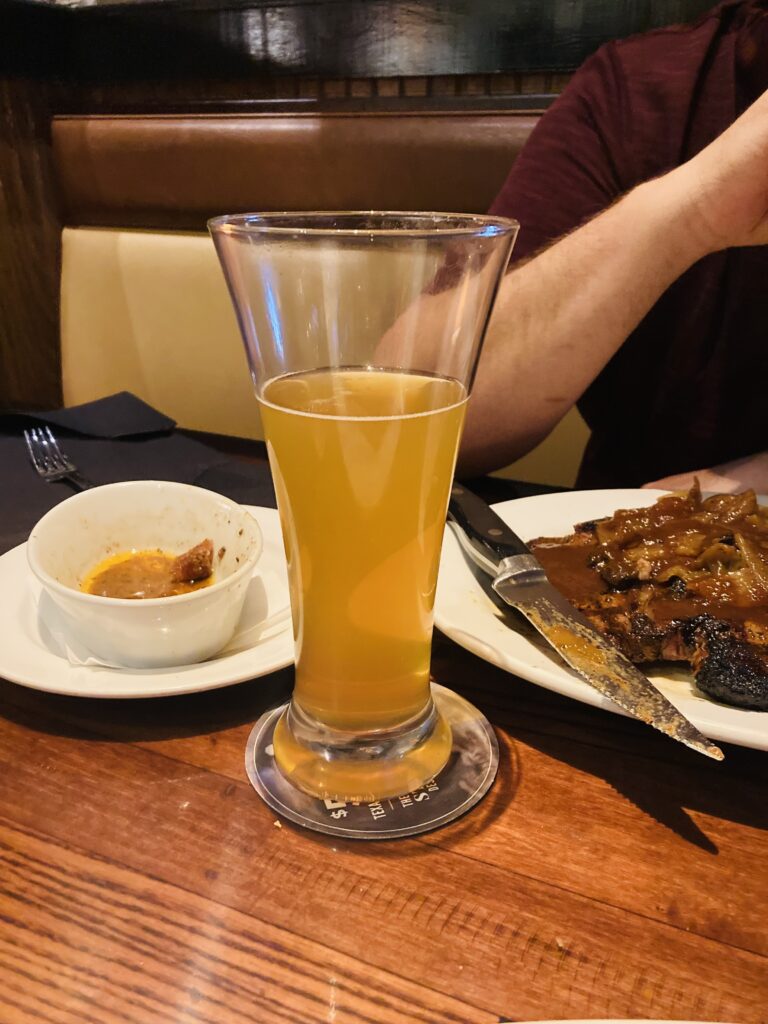
2. Alcohol Content:
- Ginger Beer: Generally, ginger beer is non-alcoholic, but some varieties may contain a small amount of alcohol (usually less than 0.5% ABV) due to the fermentation process.
- Root Beer: Traditionally, root beer is non-alcoholic, but some modern varieties are fermented, resulting in trace amounts of alcohol (usually less than 0.5% ABV).
- Draught Beer: It is an alcoholic beverage, typically containing varying levels of alcohol depending on the specific type and brand.
3. Flavor Profile:
- Ginger Beer: It has a sharp, spicy, and slightly sweet flavor derived from the ginger root. It can be quite zesty and refreshing.
- Root Beer: Root beer has a complex, herbal flavor with notes of sassafras, wintergreen, licorice, and other botanicals. It is typically sweet and creamy.
- Draught Beer: The flavor of draught beer varies widely depending on the type and style. Different types of beer can range from light and crisp to dark and robust, with various hop, malt, and yeast profiles.
4. Carbonation:
- Ginger Beer: It is typically carbonated, giving it a fizzy quality similar to other soft drinks.
- Root Beer: Root beer is carbonated, giving it a bubbly, effervescent quality.
- Draught Beer: It can be either carbonated (most common) or nitrogenated, which gives it a smoother, creamier mouthfeel.
5. Cultural Origins:
- Ginger Beer: It has its roots in England and was traditionally fermented, producing a slightly alcoholic beverage. Modern versions are often non-alcoholic and enjoyed as a soft drink.
- Root Beer: Root beer has North American origins, with early versions made by indigenous peoples using native herbs. It gained popularity in the United States, especially during the 19th and early 20th centuries.
- Draught Beer: The production and consumption of beer have deep historical roots in many cultures around the world. Different regions have their own beer traditions, resulting in a wide variety of styles and flavors.
These are general characteristics, and there can be variations within each category due to different recipes, brewing methods, and regional preferences.
Important Characteristics of Ginger ,Root and Draught beer
Ginger Beer
- Flavor Profile: Zesty, spicy, and often with a pronounced ginger kick. It can range from mildly spicy to very spicy depending on the brand or recipe.
- Sweetness: Can vary widely, from very sweet to more tart and less sugary options.
- Alcohol Content: Typically non-alcoholic, though alcoholic versions (often called “alcoholic ginger beer”) do exist.
- Ingredients: Ginger, sugar, water, and often lemon or other citrus juices. Some variations may include additional spices or flavorings.
Root Beer
- Flavor Profile: Sweet and herbal, often with dominant notes of vanilla, sassafras, sarsaparilla, and wintergreen. The flavor can be complex and multi-layered.
- Sweetness: Generally quite sweet, though there can be variations in sweetness levels among different brands.
- Alcohol Content: Traditionally non-alcoholic. However, some artisanal or homemade versions may undergo a natural fermentation process, resulting in minimal alcohol content.
- Ingredients: Sassafras, sarsaparilla, wintergreen, vanilla, and other roots and herbs. Sweeteners, such as sugar or high fructose corn syrup, are used to sweeten the beverage.
Draught beer
- Flavor Profile: Highly diverse, ranging from light and crisp to rich and malty, or even dark and roasty. The flavor is influenced by the type of beer (e.g., lager, ale, stout), the brewing process, and the ingredients used.
- Carbonation: Can vary from lightly carbonated to highly effervescent, depending on the style and brewery preference.
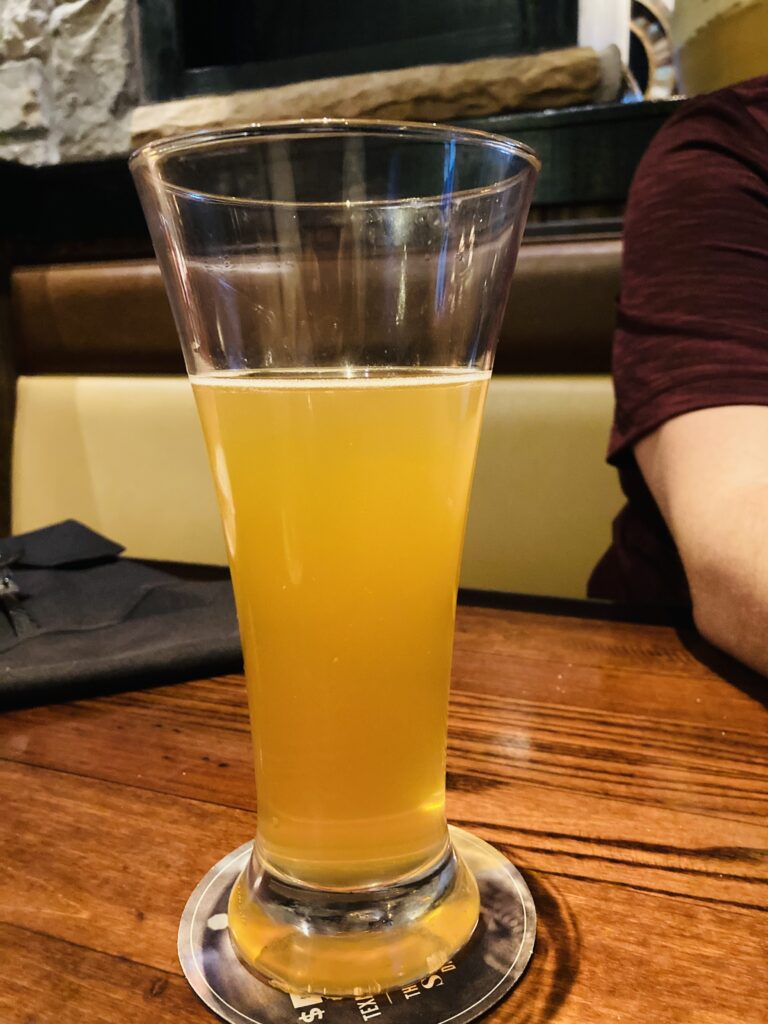
- Alcohol Content: Varies widely depending on the type of beer. Can range from light session beers with low alcohol content to strong ales or stouts with higher alcohol percentages.
- Ingredients: Water, malted barley, hops, and yeast. Additional ingredients like fruits, spices, and flavorings may be added for specialty or craft brews.
History and Culture of ginger beer
Ginger beer was first originated in Yorkshire England between 1700 and mid-1800s during the colonial spice trade .It was introduce before then in the Caribbean around the Around 1525, during its occupation of Jamaica, Spain introduced ginger to the island and thus started growing the ginger plants for production of ginger beer and other products. Over the years it became popular throughout Britain, the United States, Ireland, South Africa and Canada, reaching a peak of popularity in the early 20th century.

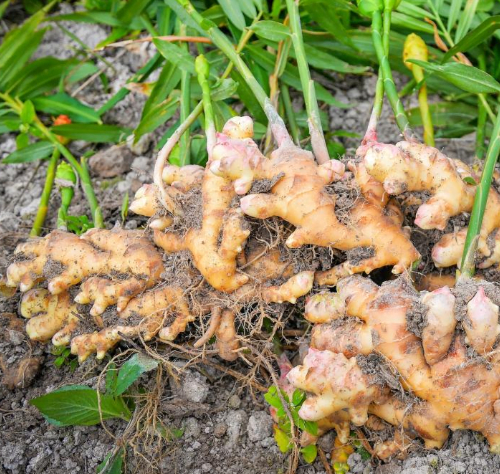
Culture
Ginger beer is a beverage typically consumed during Christmas time in many Caribbean households, but also enjoyed throughout the year. It plays a deep part in Caribbean Christmas celebrations . A cold glass of ginger beer serve with a slice of Christmas fruit cake is always a delight among Caribbean house hold this tradition has follow the Caribbean people who migrated to the United States and Canada.
Culture and History of draught beer
The practice of dispensing draft beer dates back to the medieval era, when monks devised a method of storing their brews in wooden barrels. This allowed for convenient storage and easy access to the beer’s contents. For centuries, beer was drawn directly from these barrels and served to patrons. In 1785 the beer engine was invented this ingenious device revolutionized the way beer was served. It provided a controlled and consistent flow of beer from the barrel to the glass, ensuring a more refined and enjoyable drinking experience for consumers. This innovation marked a pivotal moment in the evolution of beer service, influencing the way draft beer is enjoyed to this day. In the united Kingdom ,Ireland , Australia and New Zealand the word draught is use more commonly while in North America Draft is commonly use ,they are pronounce the same. If you are wondering is draught beer and draft beer are different, no they are not different it just depends on where you are the name is spell different.
Culture of Draught (draft) beer
In certain countries, beer holds a revered status, with Germany standing out as a notable example due to its extensive beer production. This nation annually hosts one of the world’s largest beer festivals, ‘Oktoberfest’, a tradition that has spanned generations and draws beer aficionados from around the globe. Many consider this event to be the cradle of beer culture.
10 Types of Ginger Beer
- Classic Ginger Beer:
- Traditional, spicy, and refreshing ginger beer made with ginger, sugar, water, and natural flavors.
- Classic ginger beer is a non-alcoholic, carbonated beverage flavored with ginger, sugar, and sometimes additional spices or flavorings. It has a strong, spicy, and slightly sweet taste. Unlike ginger ale, which is typically milder and sweeter, ginger beer has a more pronounced ginger flavor.
- Traditionally, ginger beer was fermented, which gave it a slight alcoholic content (usually around 0.5-2%). However, most commercially available ginger beers today are non-alcoholic and rely on carbonation to provide the fizzy texture.
- Over the years Classic Ginger beer has been a delight at Christmas in Many Caribbean, South and North American homes.
2. Flavored Varieties:
- Lime Infused Ginger Beer: A zesty twist with the addition of fresh lime juice.
- Pineapple Ginger Beer: A tropical flavor combination with the sweetness of pineapple.
- Hibiscus Ginger Beer: Infused with hibiscus flowers for a floral and tangy note.
3. Spiced Ginger Beer:
Spiced ginger beer is a type of ginger-flavored carbonated beverage that is typically non-alcoholic. It is made by fermenting ginger, sugar, and other flavorings like spices and herbs. The result is a fizzy, spicy, and slightly sweet drink with a distinctive ginger kick. Spiced ginger beer is a popular choice for cocktails like Moscow Mule and Dark ‘n’ Stormy. It’s known for its refreshing and invigorating taste, making it a favorite among those who enjoy bold and zesty flavors.
- Cinnamon and Clove Ginger Beer: Warm and aromatic spices added for a cozy twist.
- Chili Ginger Beer: A spicy kick with the addition of chili peppers.
4. Alcoholic Versions:
Alcoholic ginger beer is a beverage that combines the flavors of ginger with alcohol, typically in the form of fermented sugars. It is similar in taste to traditional non-alcoholic ginger beer but contains alcohol, usually in the range of 4% to 6% ABV (alcohol by volume). The production process involves fermenting ginger, sugar, and other flavorings with yeast, which converts the sugars into alcohol and carbonation. This results in a spicy and effervescent drink with a distinctive ginger kick. Alcoholic ginger beer has gained popularity in recent years as an alternative to traditional beers and cocktails, offering a unique flavor profile for those who enjoy the spicy warmth of ginger combined with a bit of alcohol.
- Ginger Beer Cocktail Mixer: Specifically crafted for cocktails like Moscow Mule or Dark ‘n’ Stormy.
- Hard Ginger Beer: Contains alcohol for a stronger kick, with variations like dry or sweet.
5. Organic and All-Natural:
- Made with organic ginger and natural sweeteners like agave nectar or honey.
This means that the ginger was cultivated without the use of synthetic pesticides or fertilizers, and genetic modification techniques were avoided. Additionally, other ingredients used in the ginger beer, such as sweeteners and flavorings, may also be sourced from organic sources.
All-natural ginger beer, on the other hand, is made from ingredients that are minimally processed and free from synthetic additives like artificial flavors, colors, and preservatives.
This typically means that the ginger beer contains natural ginger, sugar or other sweeteners, and possibly additional flavorings or spices, without the use of artificial chemicals.
It’s worth noting that while both terms imply a focus on natural and health-conscious ingredients, they are not as strictly regulated as the term “organic.” Therefore, it’s important to read labels and certifications to understand the specific standards that a particular brand or product adheres to.
6. Low-Calorie or Sugar-Free ginger beer
For those looking for a lighter option, sweetened with natural or artificial sweeteners.
7. Seasonal Flavors:
Apple Cinnamon Ginger Beer: Perfect for autumn with the warmth of apple and spices.
Mint Ginger Beer: A refreshing option for summer.
Peppermint Ginger beer: A welcoming Christmas special
8. Fermented Varieties:
- Probiotic Ginger Beer: Naturally fermented for a tangy, probiotic-rich option.
Remember that if you’re interested in making ginger beer at home, be cautious with the fermentation process, as it can lead to the production of alcohol if not properly managed. Always follow a reliable recipe and guidelines to ensure safety and quality.
9. Ginger Beer Concentrate:
- A concentrated form that can be diluted with water or soda for a customizable flavor intensity.
10. Ginger Beer Floats:
Ginger beer floats are a refreshing and flavorful beverage made by combining ginger beer with a scoop of ice cream. The spicy, effervescent kick of ginger beer pairs perfectly with the creamy sweetness of ice cream, creating a unique and delightful treat. It’s a simple yet satisfying drink that offers a fun twist on the classic soda float.
- Pre-mixed with vanilla ice cream for a fun and creamy dessert drink.
Here’s a simple recipe for a Ginger Beer Float:
Ingredients:
- Ginger beer
- Vanilla ice cream
Instructions:
- Chill the Glasses: Place the glasses you’ll be using in the freezer for a few minutes to get them nice and cold.
- Scoop Ice Cream: Take a scoop or two of vanilla ice cream and carefully place it in the chilled glass.
- Pour Ginger Beer: Slowly pour ginger beer over the ice cream. Be careful as it might fizz up.
- Serve and Enjoy: Use a long spoon and serve the ginger beer float immediately. The ice cream will start to melt into the ginger beer, creating a delicious combination of flavors and textures.
Optional Variations:
- You can experiment with different flavors of ice cream, like ginger or cinnamon, to add extra depth to the float.
- For an adult version, you can add a splash of dark rum or bourbon to the mix.
Remember to adjust the proportions to suit your taste preferences. Enjoy your ginger beer float!
Customizable Ginger Beer Kits
Ginger beer kits with all the ingredients needed for home brewing
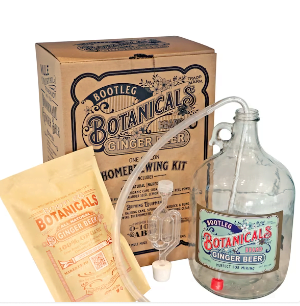
Origin History and Culture of Root beer
Root beer has been enjoyed in the United States since the 18th century. It was available for purchase in confectionery shops as early as the 1840s, and written recipes for making root beer have been recorded since the 1860s. During the 19th century, it was sometimes consumed in a heated form. As early as the 1850s, it began to be mixed with soda; back then, it was primarily sold as a concentrated syrup rather than a pre-made drink. Charles Elmer Hires was the first to make commercial root beer in 1875 for the market after he first discovered it in New Jersey while on his honey moon.
Culture
For generations, Indigenous peoples in the Americas have incorporated sassafras and sarsaparilla, which are the key components of root beer, into their culinary and medicinal practices. This includes the creation of infused beverages with these ingredients. This culinary idea was brought back to England by the European settlers.
How to make Ginger beer recipe
- Ginger root
- Sugar
- Water
- Lemon juice (optional)
- Yeast (can be wild or commercial)
Equipment:
- Large pot
- Grater or blender
- Cheesecloth or fine strainer
- Bottles with airtight caps (like swing-top or screw-top bottles)
- Funnel
Steps:
- Preparing the Ginger Base:
- Wash and peel the ginger root. You can grate it or blend it into a pulp. The finer you make it, the more flavor you’ll extract.
- In a large pot, combine the ginger with water. The ratio of ginger to water will depend on your taste preference, but a common starting point is about 1 cup of grated ginger for every gallon of water.
- Add sugar to the mixture. The amount of sugar will also depend on your preference, but typically ranges from 1 to 2 cups per gallon. More sugar will result in a sweeter ginger beer.
- Optionally, you can add lemon juice for additional flavor. This is usually about the juice of one or two lemons per gallon.
- Heating and Dissolving Sugar:
- Heat the mixture over medium heat, stirring continuously until the sugar completely dissolves.
- Cooling and Straining:
- Allow the mixture to cool to room temperature.
- Strain out the ginger solids using a cheesecloth or fine strainer. This leaves you with the ginger-flavored liquid, which is sometimes referred to as “ginger syrup.”
- Pitching Yeast:
- Transfer the ginger syrup into a sanitized fermentation vessel. This could be a glass jug or a food-grade plastic container.
- Add your chosen yeast. You can use either a ginger beer plant (a specific type of yeast and bacteria culture) or regular brewing yeast. Follow the yeast’s instructions for pitching.
- Fermentation:
- Seal the container with an airlock or a loosely fitting cap. This allows gases produced during fermentation to escape without letting air in.
- Place the container in a warm, dark place to ferment. Fermentation time can vary, but it typically takes a few days to a week.
- Bottling:
- Once fermentation is complete (you’ll notice less bubbling and a change in flavor), it’s time to bottle the ginger beer. You should use bottles designed to handle carbonation, like swing-top bottles.
- Use a funnel to transfer the ginger beer from the fermentation vessel into the bottles. Be careful not to disturb the sediment at the bottom.
- Carbonation (Optional):
- If you want to carbonate the ginger beer, you can add a little extra sugar to each bottle just before sealing. This will provide food for the remaining yeast, which will produce carbonation.
- Aging (Optional):
- Let the bottled ginger beer sit at room temperature for a day or two to develop carbonation. Afterward, you can refrigerate it to slow down fermentation.
Keep in mind that fermentation can be a bit unpredictable, so it’s important to monitor the process and adjust as needed. Additionally, be cautious about over-carbonation, as it can lead to exploding bottles. Always use appropriate bottles and storage techniques for carbonated beverages.
Yeast is not and ingredient in Caribbean Christmas ginger beer.
Simple Draught Beer recipe
- Water makes up the majority of the content of any beer, typically around 90-95%.
- Malted Barley (or other grains): Barley is the most commonly used grain in brewing, but other grains like wheat, corn, and rice can also be used. The grains are malted, meaning they’re soaked, germinated, and then dried in a kiln. This process converts the starches in the grain into fermentable sugars.
- Hops are the flowers of the hop plant. They’re used primarily as a bittering, flavoring, and stability agent in beer, to which, in addition to bitterness, they impart floral, fruity, or citrus flavors and aromas.
- Yeast is a microorganism that consumes the sugars extracted from the malted grains during fermentation. It produces alcohol and carbon dioxide as byproducts.
Optional Ingredients:
- Adjunct Grains: In addition to malted barley, some beers may use adjunct grains like corn, rice, oats, or wheat. These can influence the flavor, mouthfeel, and appearance of the beer.
- Flavorings and Additives: Some specialty beers may include additional flavorings, such as fruits, spices, herbs, or other additives to create unique flavor profiles.
- Other Sugars: Some recipes may include additional sugars, like honey or candy sugar, to influence the flavor and alcohol content of the beer.
- Clarifying Agents: These are used to help clear the beer by removing haze-causing proteins or particles. Common clarifying agents include Irish moss and gelatin.
It’s important to note that while these are the basic ingredients, the proportions, timing, and specific strains of yeast and hops, as well as other factors like water chemistry and fermentation temperature, play a significant role in determining the final flavor, aroma, and appearance of the beer. Different styles of beer may also have specific variations in ingredients and brewing techniques to achieve their characteristic profiles.
Simple Root beer recipe
- Root Beer Extract: This is a concentrated flavoring that provides the characteristic taste of root beer. You can find it in many specialty food stores or online.
- Water: You’ll need clean water for the base of your root beer.
- Sweetener: Traditionally, root beer is sweetened with sugar. However, you can use alternatives like honey, maple syrup, or artificial sweeteners if you prefer.
- Yeast (Optional): Some recipes use yeast to carbonate the root beer. This gives it a fizzy quality. If you choose to go this route, you’ll need a small amount of brewing yeast.
Instructions:
- Mix the Ingredients:
- In a large mixing bowl or pot, combine water, root beer extract, and your chosen sweetener. The exact amounts will vary depending on your taste preferences and the brand of extract you’re using. Follow the instructions on the extract bottle for guidance.
- Heat (Optional):
- Some recipes call for gently heating the mixture on the stove to dissolve the sweetener. If you choose to do this, be careful not to let it boil, as excessive heat can alter the flavor.
- Cool:
- Allow the mixture to cool to room temperature.
- Carbonation (Optional):
- If you want a fizzy root beer, add a small amount of brewing yeast to the mixture. Be aware that this step will introduce a small amount of alcohol content due to the fermentation process. If you choose not to carbonate, your root beer will be flat.
- Bottle:
- Pour the mixture into clean, sealable bottles. Leave some headspace to allow for carbonation (if you’re using yeast).
- Seal and Wait:
- Seal the bottles and let them sit at room temperature for about 2-3 days to allow the yeast to carbonate the root beer. After this period, refrigerate the bottles to slow down the fermentation process.
- Serve:
- Once chilled, your root beer is ready to be enjoyed!
Remember, there are many variations of homemade root beer recipes, and you can experiment with different herbs and spices to find a flavor that suits your taste preferences. Additionally, always be cautious when using yeast for carbonation, as over-fermentation can lead to excessive pressure in the bottles. Use appropriate bottles designed for carbonation, and consider “burping” them periodically to release excess gas if needed.
Taste and Flavor of ginger beer.
Ginger beer taste is strong and spicy. Homemade ginger beer tend to be stronger in taste and the longer it sits to ferment the stronger it is.
The taste of ginger beer can be described as a combination of sweet, spicy, and tangy flavors. It has a distinct ginger flavor that can range from mild to quite strong, depending on the brand and how it’s prepared. The sweetness comes from sugar or other sweeteners used in the recipe. Additionally, ginger beer often has a slight fizziness, similar to carbonated soft drinks, which gives it a refreshing quality.
Some variations of ginger beer might have additional flavorings like lemon, lime, or other spices, which can influence the overall taste. It’s important to note that different brands and homemade recipes can yield varying levels of spiciness, sweetness, and overall flavor profile. If you’ve never tried ginger beer before, it’s worth sampling a few different brands or recipes to find one that suits your taste preferences.
Draught beer (Draft beer)Flavor and Taste
Draught beer taste is often considered to taste fresher than bottled or canned beer. This is because it’s typically stored in kegs and served directly from the tap, minimizing exposure to light and air which can affect the taste. Depending on the style, draught beers can range from very bitter (like an IPA) to quite sweet (like a Belgian Dubbel or a Milk Stout). It has a maltiness, This is the flavor and aroma imparted by the malted grains used in the brewing process. It can range from biscuity and caramel-like to chocolatey or roasted
When you take a sip of draught beer, it often leaves a pattern of foam on the glass called lacing. This can provide visual cues about the beer’s texture and mouthfeel. Draught beer is usually served at a slightly colder temperature than bottled beer, which can impact the perceived flavor. The optimal serving temperature can vary depending on the type of beer.
Root beer Flavor and taste
Root beer taste a combination of sweet, herbal, and slightly spicy notes. The specific taste of root beer can vary depending on the brand and recipe used, but here are some common flavor components:
- Sweetness: Root beer is sweet, owing to the sugars or sweeteners used in its production. This sweetness can range from moderate to fairly high, depending on the brand and type.
- Sassafras: Traditionally, sassafras bark was a key ingredient in root beer. It imparts a distinct, slightly earthy and aromatic flavor. However, it’s important to note that due to safety concerns, many modern root beers no longer contain sassafras, using artificial or natural flavorings instead.
- Wintergreen is another traditional component of root beer flavor. It contributes a minty, somewhat medicinal quality to the taste.
- Vanilla is a common flavoring in root beer, providing a creamy, sweet, and aromatic element.
- Anise or Licorice: Some root beer recipes include anise or licorice, which contribute a mild, slightly spicy, and aromatic quality. This can give root beer a hint of black licorice flavor.
- Cinnamon, Clove, and Other Spices: Depending on the recipe, various spices like cinnamon, clove, and nutmeg may be used to add warmth, complexity, and depth to the flavor.
- Carbonation: Like most sodas, root beer is typically carbonated, providing a fizzy and effervescent quality.
- Molasses or Caramel: These ingredients can be used to add depth and richness to the flavor profile, contributing a slightly burnt or caramelized note.
- Citrus Zest: Some root beers contain citrus peel or zest, which can add a bright, citrusy element to the overall taste.
It’s worth noting that there are many different brands and variations of root beer, each with its own unique blend of flavors. Some root beers are deliberately crafted to have a more pronounced sassafras flavor, while others may focus on other elements like vanilla or spices. Additionally, artisanal or craft root beers often experiment with additional botanicals and flavorings to create distinctive profiles.
Contraindications for Ginger beer, Draught beer and Root beer
- Ginger Beer:
- Allergies: Individuals with allergies to ginger or any other ingredients in ginger beer should avoid it.
- Gastrointestinal Issues: Ginger can sometimes exacerbate acid reflux or other gastrointestinal conditions. People with these issues should consume ginger beer in moderation or consult a healthcare professional.
- Blood Clotting Disorders: Ginger may have a slight blood-thinning effect. Those taking blood-thinning medications or with bleeding disorders should be cautious.
- Pregnancy: Pregnant individuals should consult a healthcare provider before consuming large quantities of ginger, as it may have potential effects on pregnancy.
- Draught Beer:
- Alcohol Sensitivity or Dependency: Individuals with alcohol sensitivity, alcohol use disorder, or certain medical conditions should avoid or limit alcohol consumption, including draught beer.
- Pregnancy: Pregnant individuals should avoid alcohol entirely due to potential harm to the fetus.
- Medication Interactions: Some medications, especially those that interact with alcohol, can be affected by the consumption of beer. It’s important to consult a healthcare provider about potential interactions.
- Root Beer:
- Sensitivity to Ingredients: Some individuals may have allergies or sensitivities to specific ingredients in root beer, such as sassafras or certain flavorings. They should opt for alternatives that do not contain these components.
- Sugar Content: Traditional root beer can be high in sugar, which may not be suitable for individuals with diabetes or those aiming to reduce sugar intake. There are sugar-free or low-sugar alternatives available.
- Artificial Additives: Some commercially-produced root beers may contain artificial additives or sweeteners, which could be a concern for individuals sensitive to these substances.
Ginger beer, a non-alcoholic beverage, is made from fermented ginger, sugar, and water, featuring a spicy, ginger-forward flavor. Draught beer, an alcoholic drink, is served on tap from kegs and is crafted from water, malted barley, hops, and yeast, with a diverse range of flavors depending on the type. Root beer, another non-alcoholic soft drink, is composed of sassafras bark, sweeteners, and various spices, offering a sweet and herbal taste. While modern versions of ginger beer and root beer may contain trace amounts of alcohol due to fermentation, traditional forms remain non-alcoholic. These beverages cater to different tastes and occasions, with ginger beer often used as a mixer, draught beer enjoyed in social settings, and root beer savored as a standalone or in root beer floats.
Resources
I personally make my own Ginger beer at home, using the recipe provided in the article. I learned from a very young age since the drink is part of my culture and tradition every Christmas.
https://en.wikipedia.org/wiki/Ginger_beer
https://www.horniman.ac.uk/story/ginger
https://www.theepicureanbeers.co.uk/blogs/draft/exploring-beer-culture-around-the-globe
https://www.homebrewersassociation.org/beyond-beer/root-beer-the-quintessential-american-soda/
https://www.diffordsguide.com/beer-wine-spirits/category/270/root-beer#
Food Cures: Improve Your Health Through What You Eat. Publications International, Ltd., 2019.
